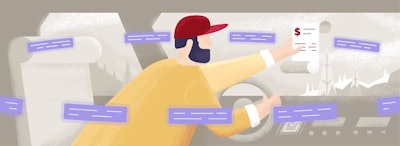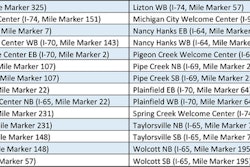This the first of a three-part series to help carriers control, and even reduce, their insurance premiums. Part two explores the specific areas underwriters are looking for in your most unpredictable area – drivers. Part three lists key ways fleets can reduce their insurance costs.

The number one question I receive as an insurance agent is, “how do I save money on premiums?” Insurance is often the third highest operational cost after fuel and truck-related expenses, and while fuel costs have declined over the past eight years, insurance premiums have risen every year for more than a decade.
It’s no wonder truckers cringe when their insurance renewal invoice arrives.
 Wade Millward is chief marketing officer, transportation division, of Millward Agency, a family-owned and operated insurance agency in Provo, Utah.
Wade Millward is chief marketing officer, transportation division, of Millward Agency, a family-owned and operated insurance agency in Provo, Utah.But there is good news. Both owner-operators and fleet owners have the ability to take back control of their insurance costs, but doing so requires a firm commitment to implement and actively administer a variety of risk management practices. If you take away anything from this series of recommendations, I hope that it is that your effort to manage insurance costs should begin now. Not when you receive your renewal invoice.
Pulling Back the Curtain
Insurance is often a misunderstood product, a necessary evil where many people think that insurance companies exist only to take your hard-earned money and deny claims. I am not blind to the fact there are a few unscrupulous insurers but the truth is most insurance companies want to be a valuable partner in your pursuit of success.
At its core, the business of insurance is a numbers game. A balance between taking on risk, charging appropriate premiums and making a little of profit in the process. Take on too much risk, or charge too little premium, and an insurance company jeopardizes their very existence. Avoid risk, or charge high premiums, and customers will look elsewhere.
But if you’ve never filed a claim, why does your premium seem so high?
Insurance works by pooling the premiums of all insureds into reserve accounts. These accounts are then used to pay future claims. How much money is brought into the company (premiums) compared to how much is paid out (claims + expenses) determines an insurance company’s profitability. In the insurance industry, this equation is called the combined ratio.
Combined ratios under 100% means profitability while over 100% means money lost.
So, while some trucking companies may not have had any claims, others are indeed incurring losses. In fact, the combined loss ratio for commercial auto insurance as an industry has exceeded 100% every year since 2011. On the whole, the industry is not making a profit. It’s losing money year after year.
There is a silver lining, however. Owner-operators and fleet owners who are committed to mitigating risk will attract insurance companies offering more competitive premiums. These insurers have more strict underwriting guidelines which helps lower their combined loss ratio and, by extension, offer lower premiums for their customers.
Inside the mind of an underwriter

Insurance companies provide the financial protection you need to weather the impacts of any claims made against your operation, but there is an important gatekeeper that you and your insurance agent must satisfy to unlock the best terms and pricing for your insurance program: the insurance underwriter.
Underwriters are the first line of defense for the insurance company. At many companies, underwriters are rewarded for writing “good” business. Good business isn’t as much about how much premium an underwriter puts on their books, but the amount of risk they take on. Good business keeps the insurer’s combined loss ratio as low as possible.
It is here where you, as an owner-operator or fleet owner, have the most control of how much you are likely to pay for your insurance program.
The underwriter’s job is a cross between an actuary and a fortune teller. While they have access to a deep pool of data and statistics, underwriters want to know your story. Yes, underwriters want to get to know you. The deeper their understanding of your operation and the risk mitigation strategies you are using, the more comfortable they will be underwriting your insurance.
What’s Your Story?
Underwriters want to know your story, including how you have tackled problems in the past, the steps you are taking to protect yourself today and how you plan to grow in the future. Becoming your partner is much more profitable than having a simple transactional relationship.
But you can’t have just any ol’ story.
The precise details you share will determine if your insurance underwriter will be able to maximize your coverages for the most competitive premiums.












